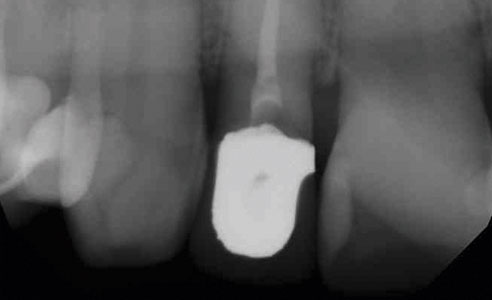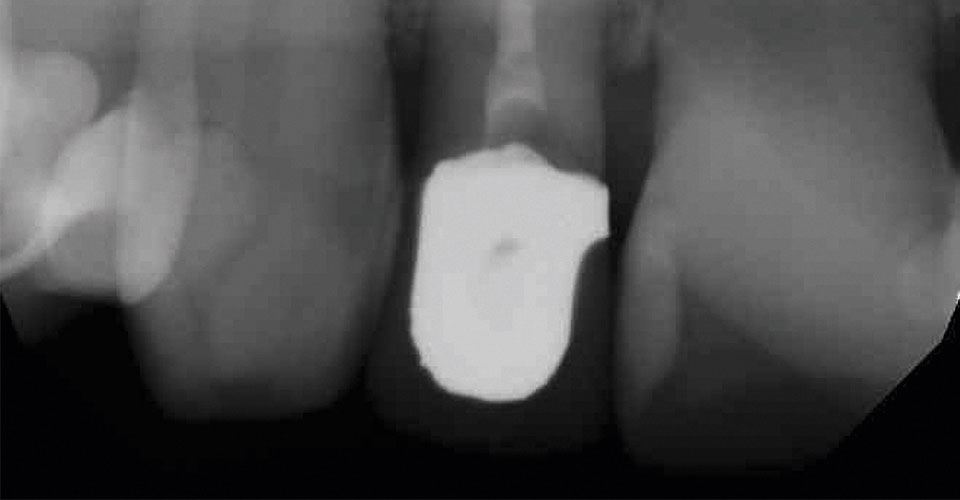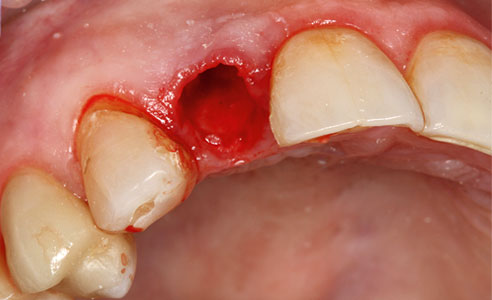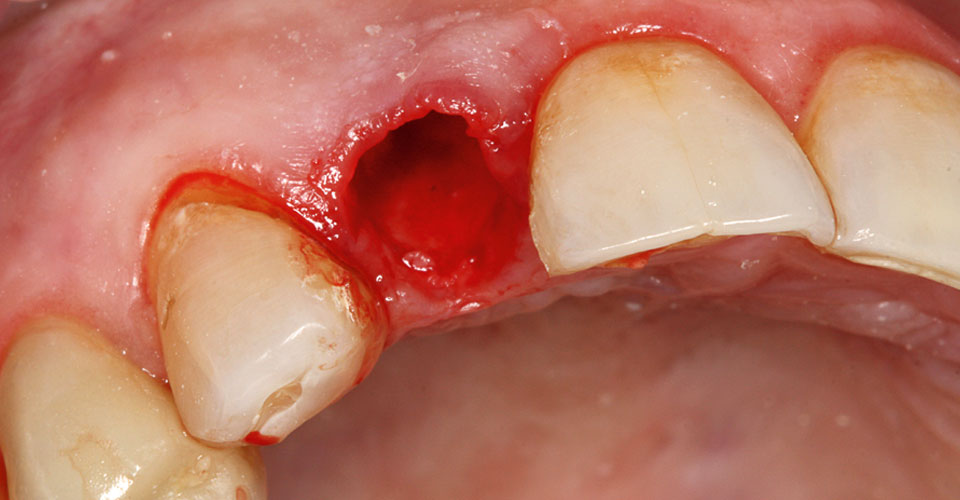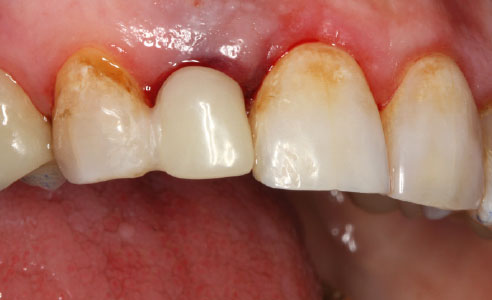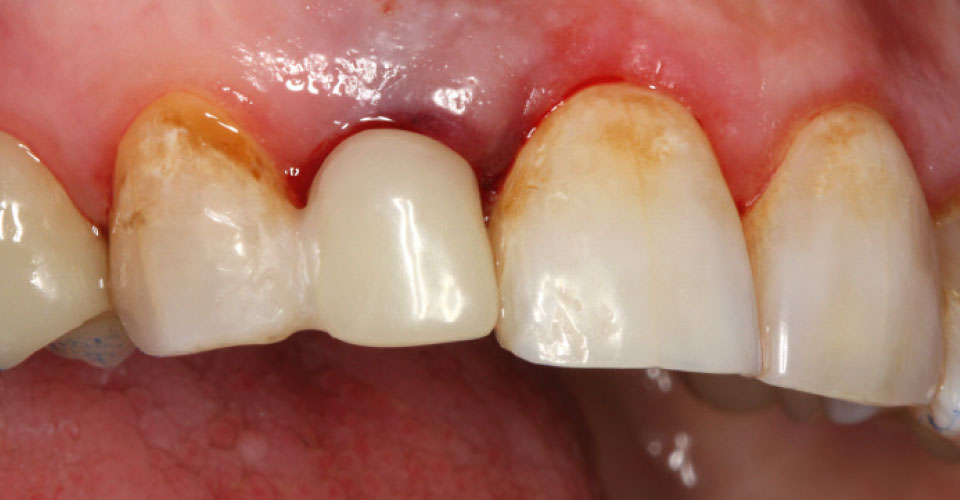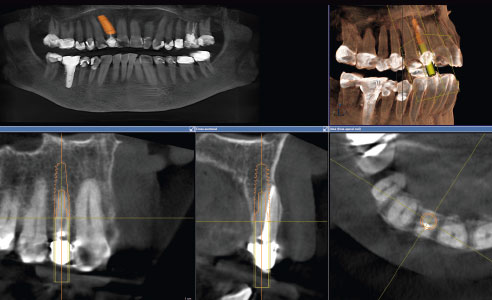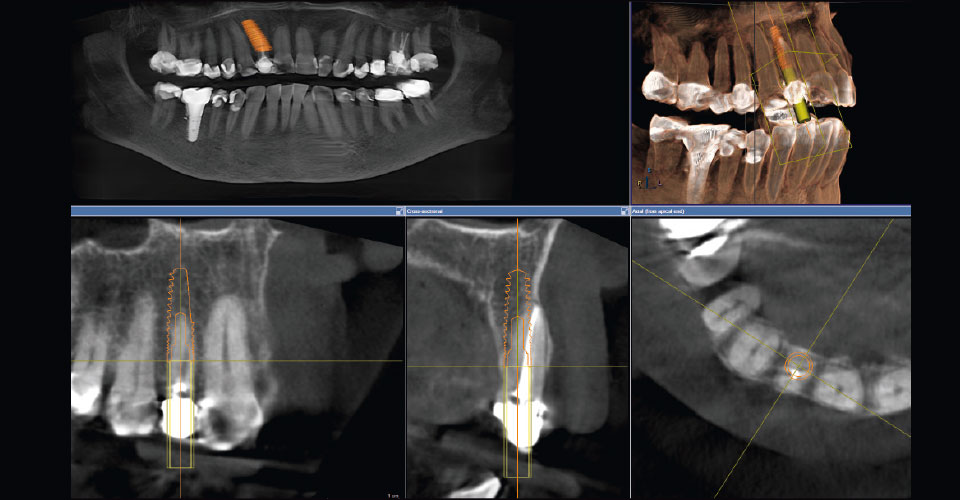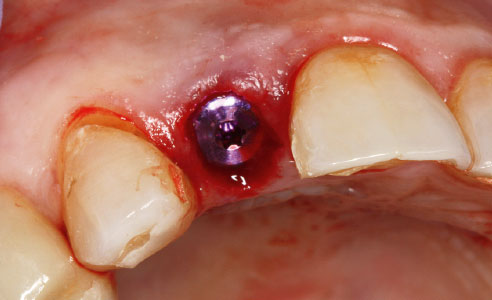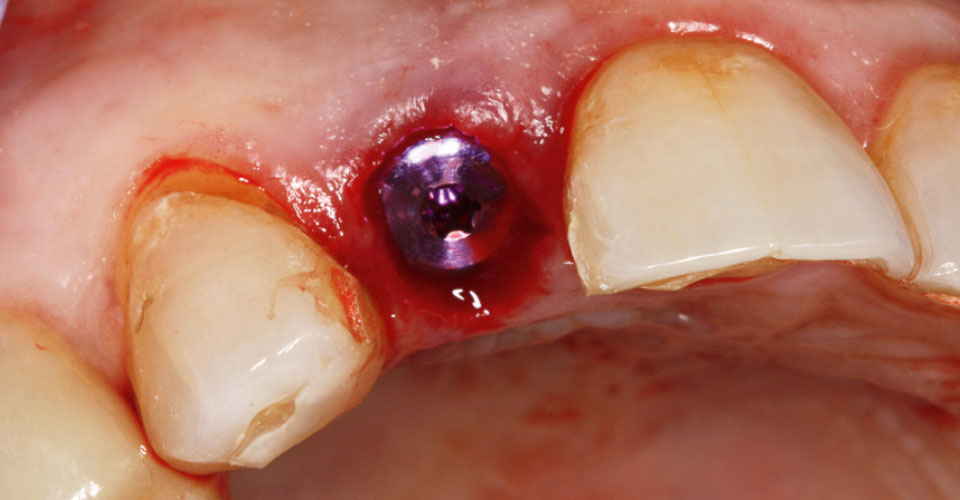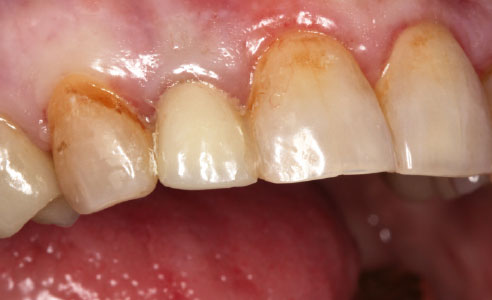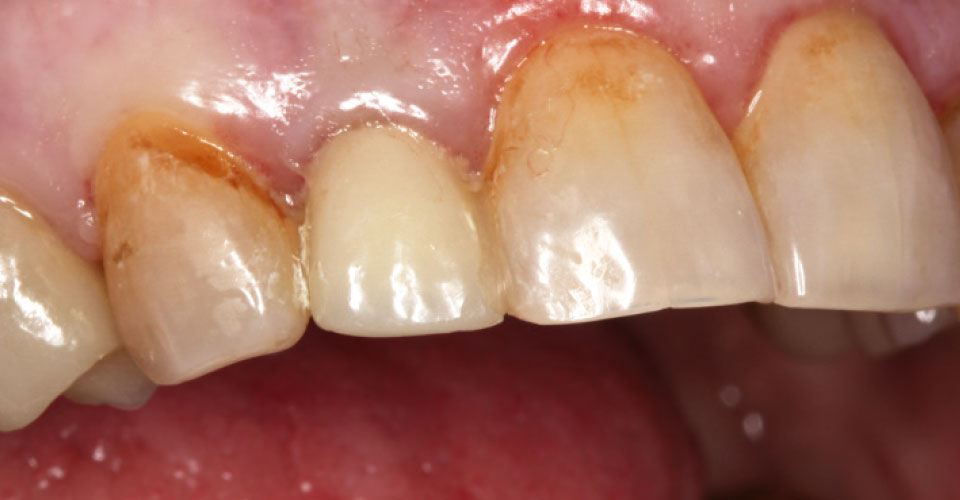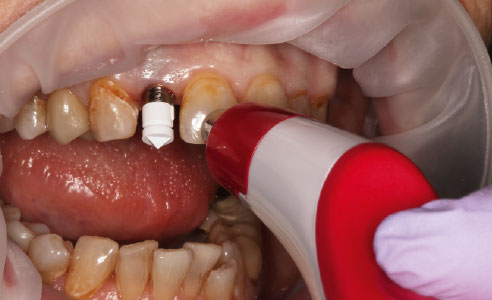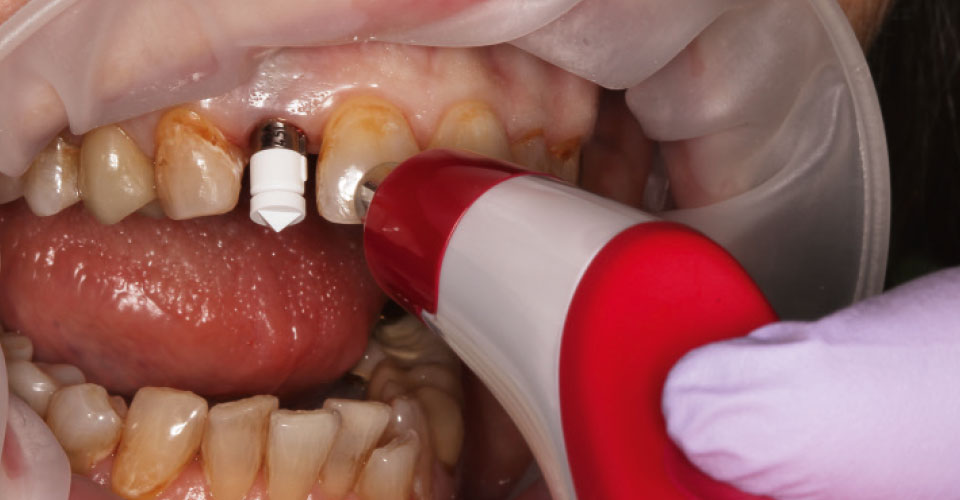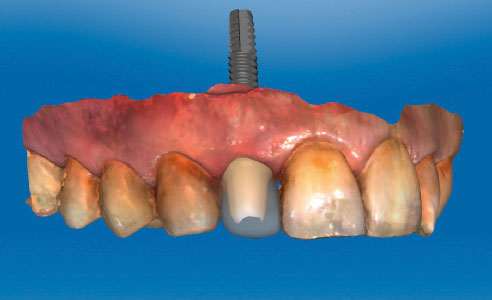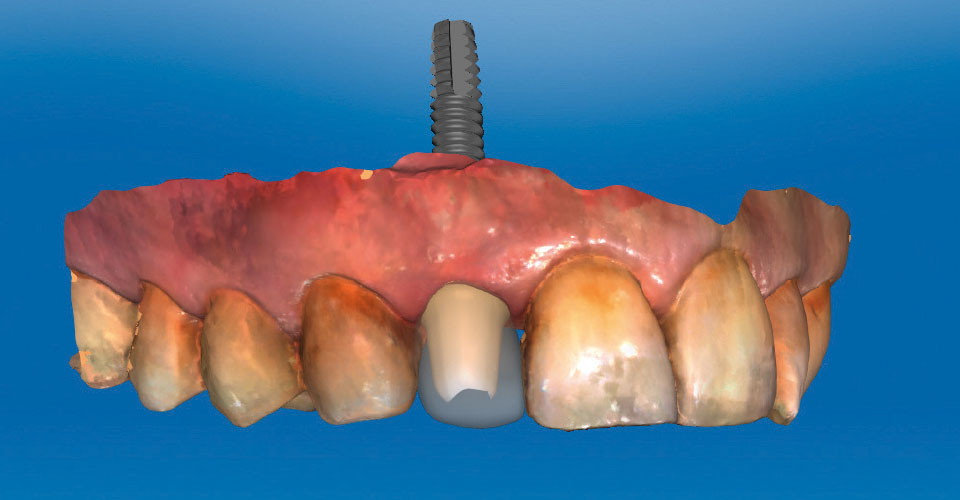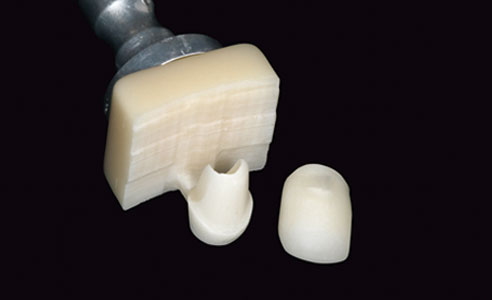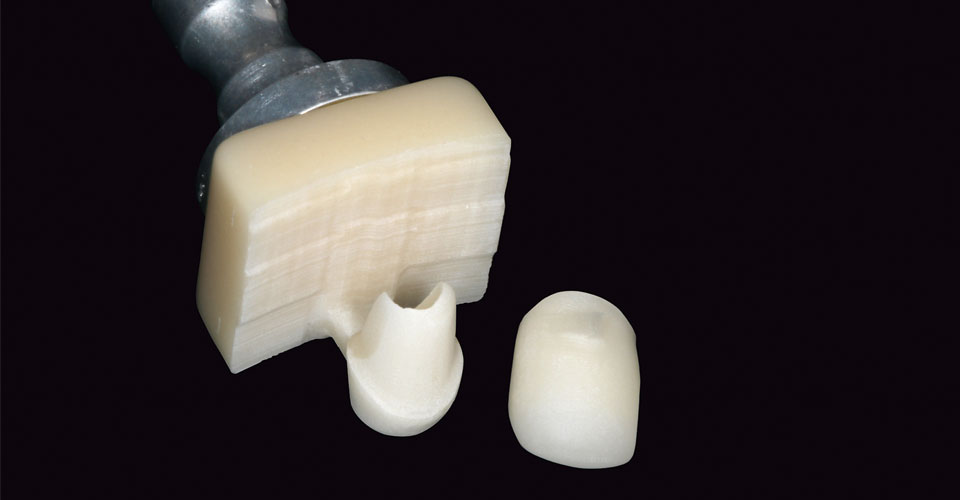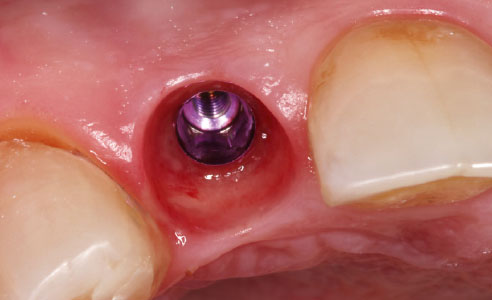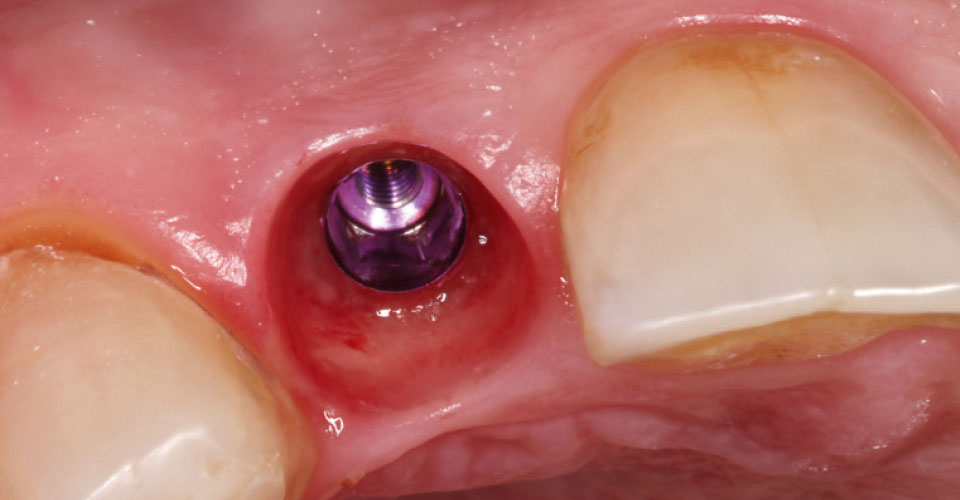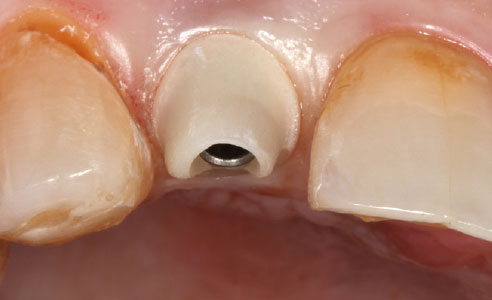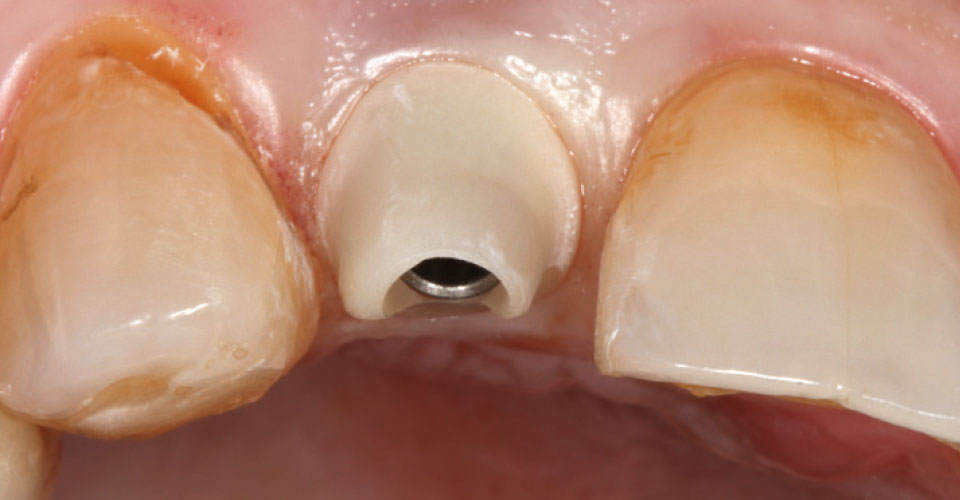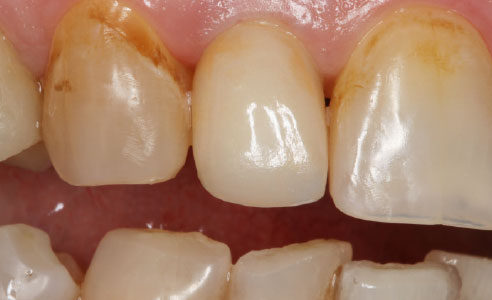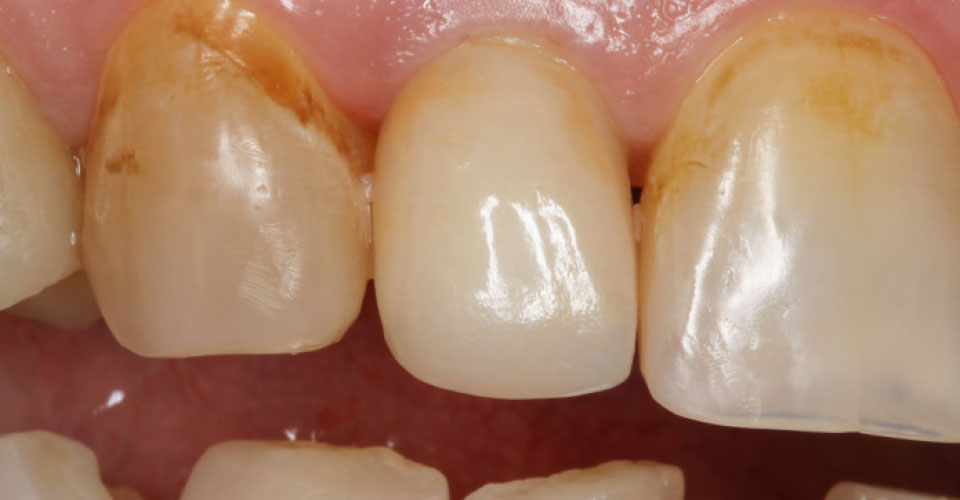CAD/CAM-fabricated, two-part implant rehabilitation in the front
In the anterior region, two-part abutment and crown rehabilitations are a great way to predictably shape the gingiva and achieve optimal prosthetic results. VITA ENAMIC IS hybrid ceramic blanks (VITA Zahnfabrik, Bad Säckingen, Germany) have a dentin-like elasticity. In two-part restorations, the hybrid ceramic abutment then acts as a shock absorber between the ankylotically anchored implant body and the all-ceramic crown. In the interview, Dentist Dr. Daniel Butterman (Centennial, Colo., USA) describes the esthetic and functional benefits of a two-part implant reconstruction with an abutment made of VITA ENAMIC IS and a crown of VITABLOCS TriLuxe forte.
DV: What are the advantages of a two-part, screw-retained implant reconstruction with a hybrid ceramic mesostructure and a feldspar ceramic crown?
Dr. Daniel Butterman: The combination of the force-absorbing VITA ENAMIC IS abutment with the esthetics and translucency of feldspar ceramic is a real clinical benefit for me. With it the prosthetic superstructure becomes more predictable in terms of pink and white esthetics.
DV: How do the mesostructure of VITA ENAMIC IS and a crown made from the feldspar ceramic VITABLOCS TriLuxe forte harmonize so well esthetically and functionally?
Dr. Daniel Butterman: The shade of the VITA ENAMIC IS abutment harmonizes perfectly with the polychromatic VITABLOCS TriLuxe forte crown. The translucency of the feldspar ceramic allows the warm, dentin-like color effect of the hybrid ceramic abutment to act from within.
DV: What should clinicians consider when conditioning a titanium base and hybrid ceramics in order to reliably bond all structures adhesively?
Dr. Daniel Butterman: The titanium base must be sandblasted and then conditioned with a metal primer. The adhesive surface of the VITA ENAMIC IS abutment is etched with hydrofluoric acid and then silanized. The advantage of hybrid ceramics is that the dominant ceramic network can be easily conditioned and then adhesively bonded in a proven form.
DV: How do you usually handle soft tissue management, and how can an ideally shaped emergence profile be reproducibly achieved?
Dr. Daniel Butterman: The emergence profile can be designed either as part of the surgical procedure with a temporary restoration or during exposure with a CAD/CAM-supported temporary restoration. The contours and the emergence profile can be specified as part of the computer-aided design.
DV: What are the clinical advantages of the VITA ENAMIC hybrid ceramics in treating patients with implant-supported reconstructions?
Dr. Daniel Butterman: For me, the two biggest advantages are the speed of grinding and manual preparation, which makes it possible for me to provide restorations for patients within one day. In addition, the force-absorbing properties of VITA ENAMIC help protect the implant and bone from occlusal overload.
Report 07/18



